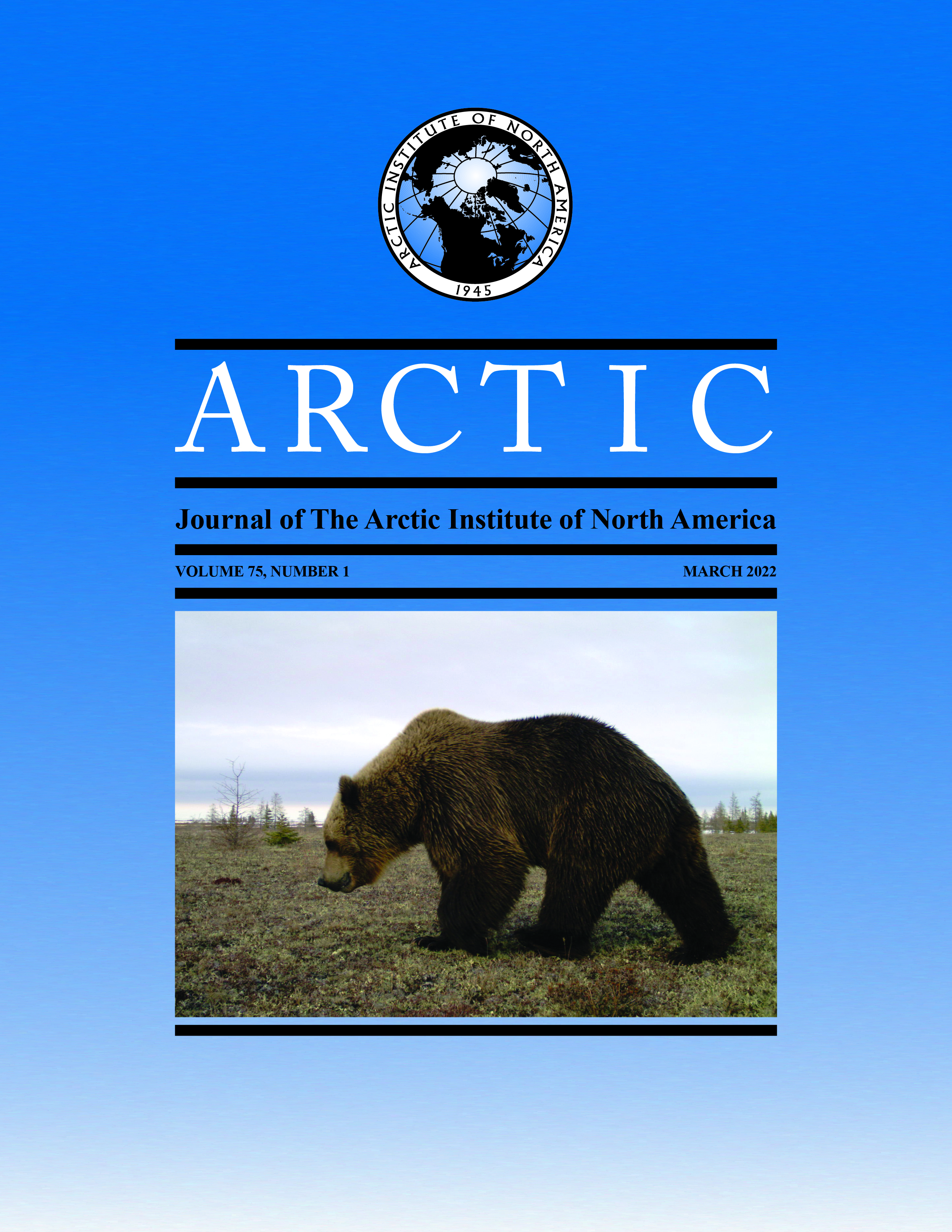The Effect of Traffic Levels on the Distribution and Behaviour of Calving Caribou in an Arctic Oilfield
DOI:
https://doi.org/10.14430/arctic74609Ключевые слова:
Alaska; calving; caribou; Central Arctic herd; development; disturbance; mitigation; oil and gas; Rangifer tarandus; trafficАннотация
Caribou are the most abundant large terrestrial mammals in Arctic Alaska, providing important cultural and subsistence resource values for local communities. As oil and gas development expands across the Arctic Coastal Plain of northern Alaska, understanding the potential impacts on caribou and improving associated mitigation measures are a crucial focus of applied research. One consistently observed impact in northern Alaska is displacement of maternal caribou within 2 – 5 km of active oilfield roads and gravel pads for a period of 2 – 3 weeks during and immediately after calving. A potential mitigation measure to address calving displacement is convoying of traffic to reduce traffic frequency and vehicle-related disturbance on roads in calving areas. We conducted frequent road and aerial surveys of caribou near two oilfield roads, one with convoying and one without, over a 3-year period during the precalving, calving, and postcalving periods to evaluate the effectiveness of traffic convoying. Road surveys indicated that caribou closer to the roads and groups with calves exhibited more frequent and stronger behavioural reactions in response to traffic, and that moderate or strong reactions to traffic, such as standing up and walking or running away, were more frequent near the road with convoying than near the road with unlimited traffic. Aerial survey results indicated some avoidance of areas up to at least 2 km from the road with convoying and 4 km from the road without convoying by caribou groups with calves. This relationship was present even after adjusting for other factors affecting distribution. This avoidance of roads by maternal caribou was limited to the calving period and was not evident during the precalving or postcalving periods. In addition, an inactive elevated terrestrial drilling platform was present on the calving grounds during one year, but we found no evidence of caribou avoidance of that structure during calving at our scale of analysis.
Загрузки
Опубликован
Выпуск
Раздел
Лицензия
Copyright (c) 2022 ARCTIC

Это произведение доступно по лицензии Creative Commons «Attribution» («Атрибуция») 4.0 Всемирная.


